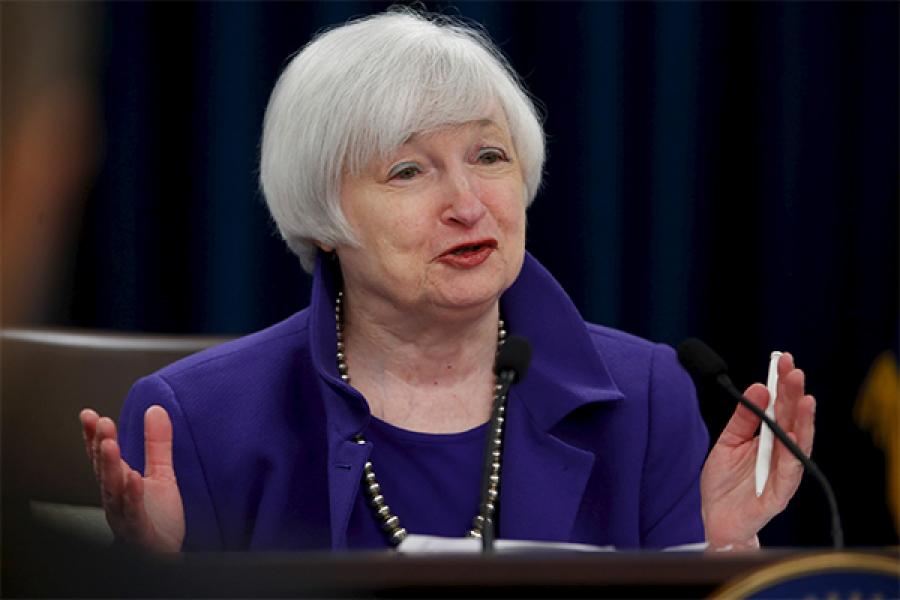
Sensex, rupee maintain composure amid Fed rate hike
Experts say India can weather the impact of the Fed's current move but further rate hikes may raise concerns
India’s equity benchmark, Sensex, ended 309 points up, to close at a two-week high on Thursday, after the US Federal Reserve hiked interest rates for the first time in almost a decade on Wednesday. The US central bank’s policy-setting committee raised the benchmark federal funds rate by a quarter percentage point.
It was a U-shaped recovery for the Sensex and Nifty on Thursday as all early morning gains were erased in afternoon trade before the market climbed back again. The benchmark 30-share Sensex closed at 25803.78, up 1.21 percent and the Nifty 50 index also rose 1.21 percent from its previous close to end at 7,844.35.
The Indian currency too braved the Fed’s rate hike decision on Thursday, gaining 0.3% against the dollar to trade at 66.56 in late afternoon, after having slid to an over two-year-low of 67.14 on Monday.
India’s policymakers and the central bank continued to allay fears of the impact of the hike on Thursday. Arvind Subramanian, India’s chief economic advisor said: “I think we are relatively well cushioned. Volatility in Indian markets should be quite minimal. This rate hike was widely anticipated, so I think markets should have priced this in and there should not be much of an impact of this per se [on markets],” he told reporters in New Delhi.
India’s central bank has already said that it is ready to tackle the impact of the Fed’s move. The Reserve Bank of India governor Raghuram Rajan had in a board meeting in Kolkata on December 11, said: “The best defence against external shocks and volatility is sensible and sustainable domestic policies for growth.”
Analysts and economists have also played down the impact of the rate hike on India.
“India is not immune to potential general emerging market jitters related to the Fed lift-off, but it is better placed than many of its peers for a number of reasons,” said Thomas Rookmaaker, director of ratings agency Fitch Ratings, in a note to clients on Thursday. “Its (India’s) external balances have significantly improved since mid-2013, with foreign exchange reserves rising by some $65 billion to $353 billion as of November 2015,” he said.
India is also less dependent than several of its rivals on commodity exports, and has thus not been negatively affected by the global rout in commodity prices. Also, Rookmaaker said that only a small part of India’s sovereign debt is held by foreigners or is denominated in foreign currency.
But there could be concerns going ahead if the Fed plans for more rate hikes in 2016, considering a direction has been taken, analysts said. “If there are more hikes in 2016, it is impossible that money will not flow back to the US,” said Jayant Manglik, president (retail distribution) with Religare Securities.
The dollar is expected to continue to strengthen against the rupee in the coming months and commodity prices will feel the heat of a dollar strengthening against other currencies.
Commenting on the RBI stance for the future, a Yes Bank research report said: “We continue to expect the RBI to retain its accommodative stance by lowering repo rate by 25 basis points early next year, with the possibility of another 25 basis points dependant on government’s persistence with its fiscal consolidation roadmap.”
(A basis point is one-hundredth of a percentage point)
















